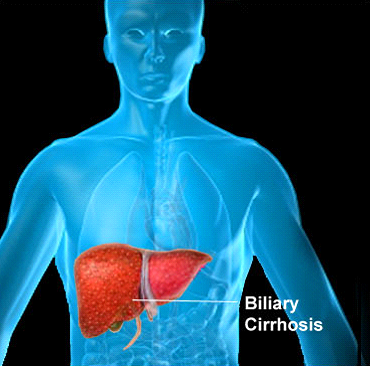Primary Biliary Cirrhosis Symptoms, Causes, Diagnosis and Treatment

What Is Primary Biliary Cirrhosis?
Bile is an essential fluid which plays a vital role in our food digestion. It is produced in the liver. It also helps in getting rid of the worn-out toxins, cholesterol and R.B.C of our body. Primary biliary cirrhosis, the medical term is defined by inflammation, swelling and irritation of the liver’s bile ducts. Such tend to block the smooth flow of bile. This interruption damages the cells of liver, leading to its scarring, a condition commonly known as cirrhosis.
What Are The Symptoms Of Primary Biliary Cirrhosis?
Majority individuals have no signs and symptoms at the time primary biliary cirrhosis is diagnosed. Emergence of its symptoms occurs gradually and can include:
- Jaundice.
- Itching.
- Fatty stools.
- Fatty deposits under your skin.
- Fatigue.
- Enlarged liver.
- Abdominal pain.
- Emergence of yellow spots on your eyelid.
When Is The Right Time To Seek Medical Assistance?
Do no delay to call up for an appointment with your doctor in case of:
- Vomiting blood.
- Abdominal swelling.
- Jaundice.
- Confusion.
- Bloody stools.
- Skin itching.
What Causes Primary Biliary Cirrhosis?
What causes the inflammation of the bile ducts is a mystery. Though, it is an autoimmune disorder, which points out that the immune system of a body attacks and destroys its healthy tissues itself, erroneously!
What Are The Risk Factors Of Primary Biliary Cirrhosis?
Few factors identified for raising the risks of primary biliary cirrhosis are:
- Being a woman.
- Middle-aged individuals.
What Are The Possible Complications Of Primary Biliary Cirrhosis?
While the damage to the liver progresses, individuals with the disorder can encounter some serious medical problems such as:
- Cirrhosis.
- Portal hypertension.
- Enlarged spleen.
- Gallstones.
- Bile duct stones.
- Liver cancer.
- Hepatic encephalopathy.
- Enlarged veins.
- Other immune system/ metabolic disorders.
How Is Primary Biliary Cirrhosis Diagnosed?
First of all, the doctor will carry out a thorough physical exam. After which, he or she can suggest the following tests in order to find out whether or not the liver is properly functioning:
- Prothrombin time (PT).
- Liver function test.
- Albumin blood test.
- Lipoprotein and cholesterol blood tests.
Some other tests the doctor can suggest for diagnosing primary biliary cirrhosis are:
- Liver biopsy.
- Anti-mitochondrial antibodies.
- Elevated immunoglobulin M level (blood).
How Is Primary Biliary Cirrhosis Treated?
Treatment of primary biliary cirrhosis aims to relieve the symptoms whilst prevent its complications. Few of its treatment options include:
- Ursodeoxycholic acid can help the elimination of bile from your bloodstream. In addition to this, it has also shown improvement in the survival rate of primary biliary cirrhosis.
- Cholestyramine can be prescribed to reduce itching.
- Vitamins replacement therapy can be recommended in order to restore lost vitamins K, A, D and E in fatty stools.
- Other bone medicines and calcium supplements can also be added in the treatment plan.
These can help treat or prevent weakening of bones.
- Liver transplant.
By : Natural Health News




